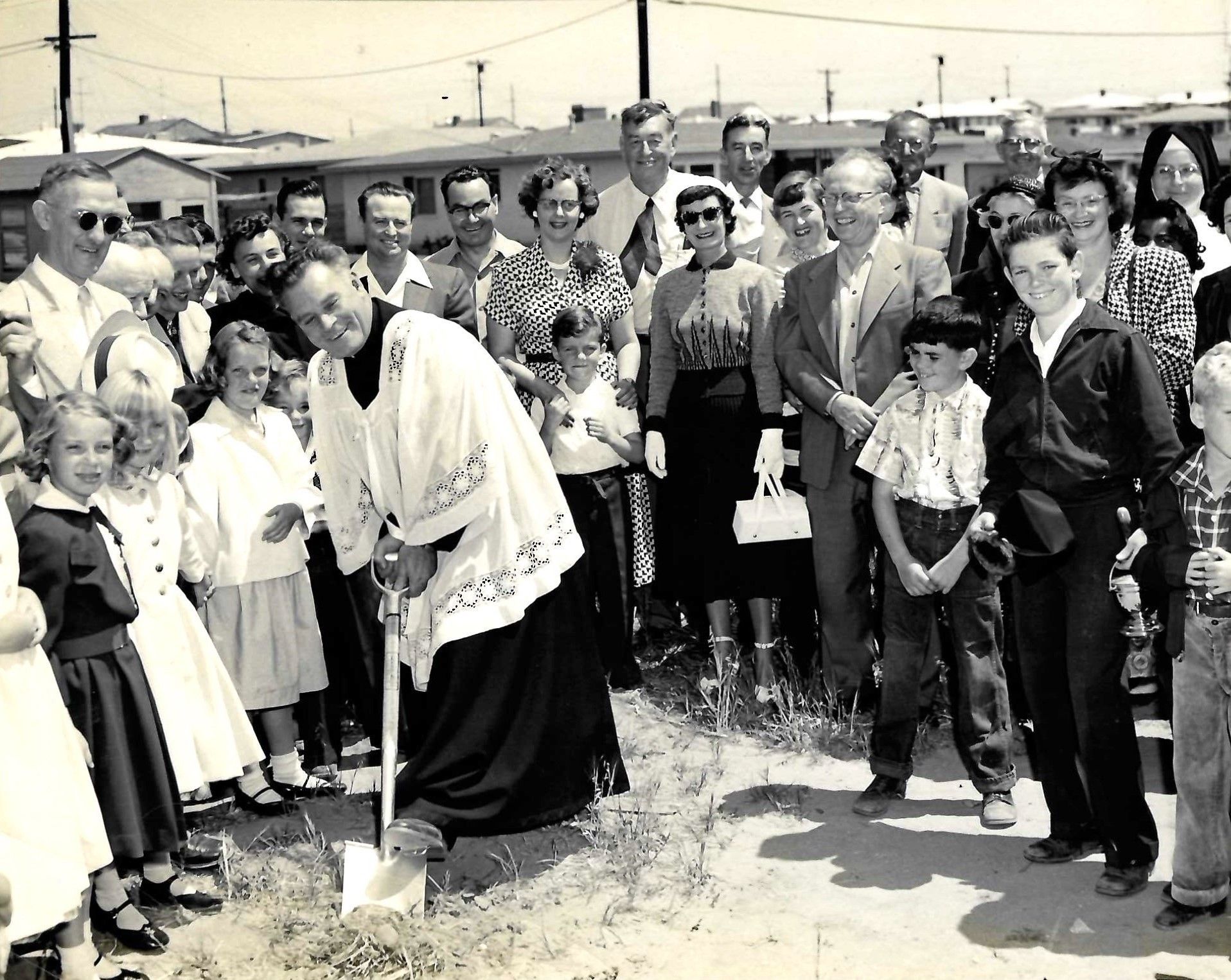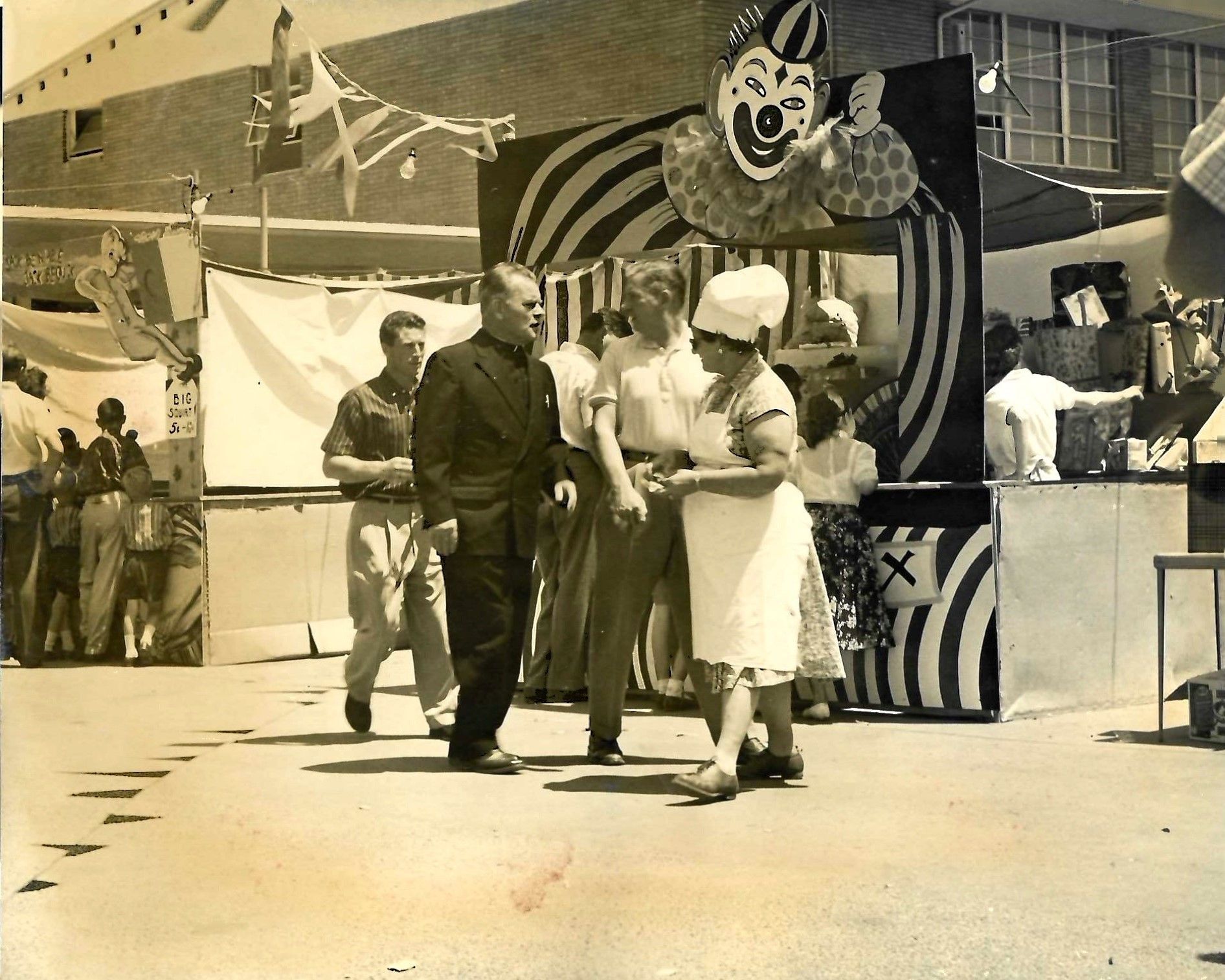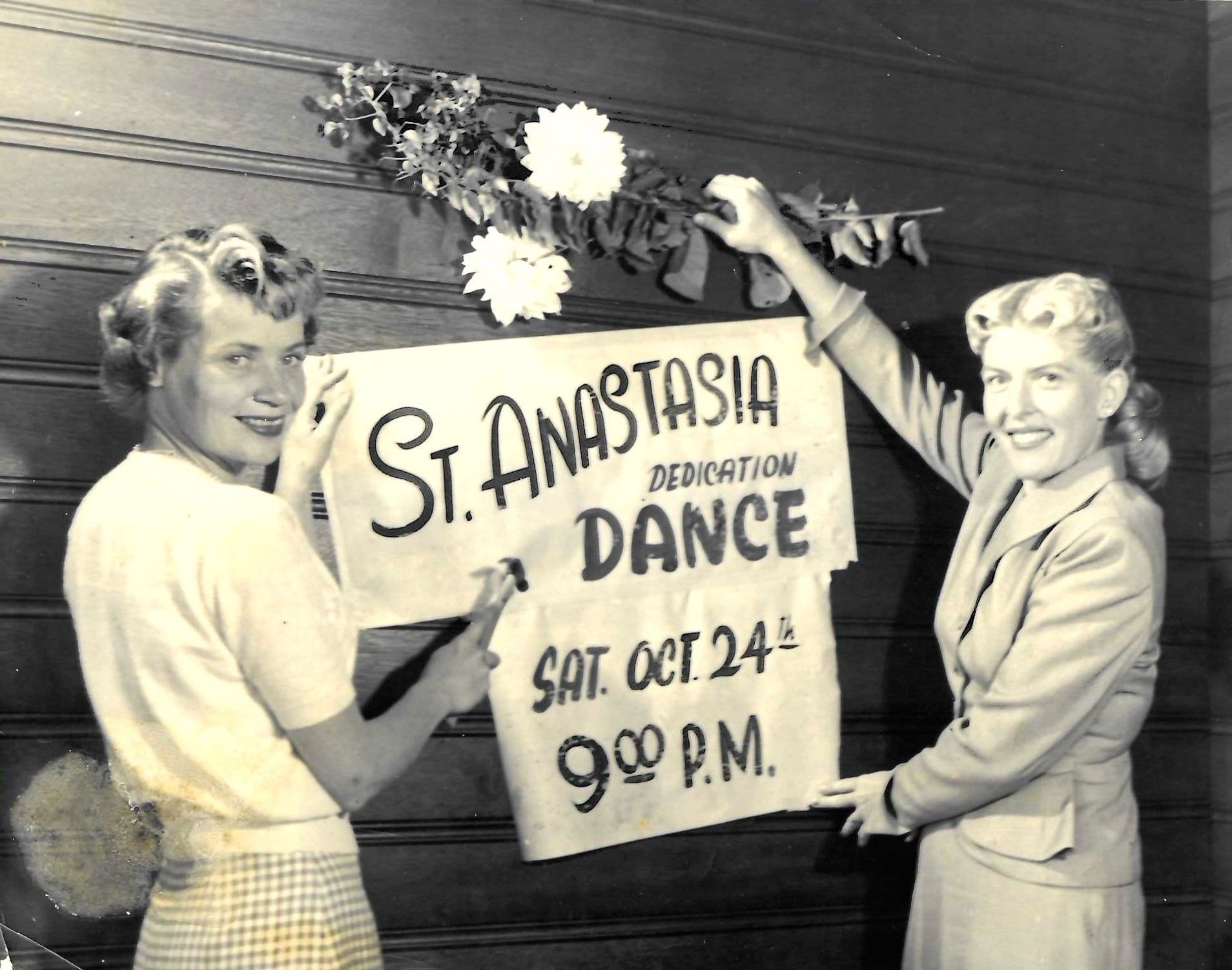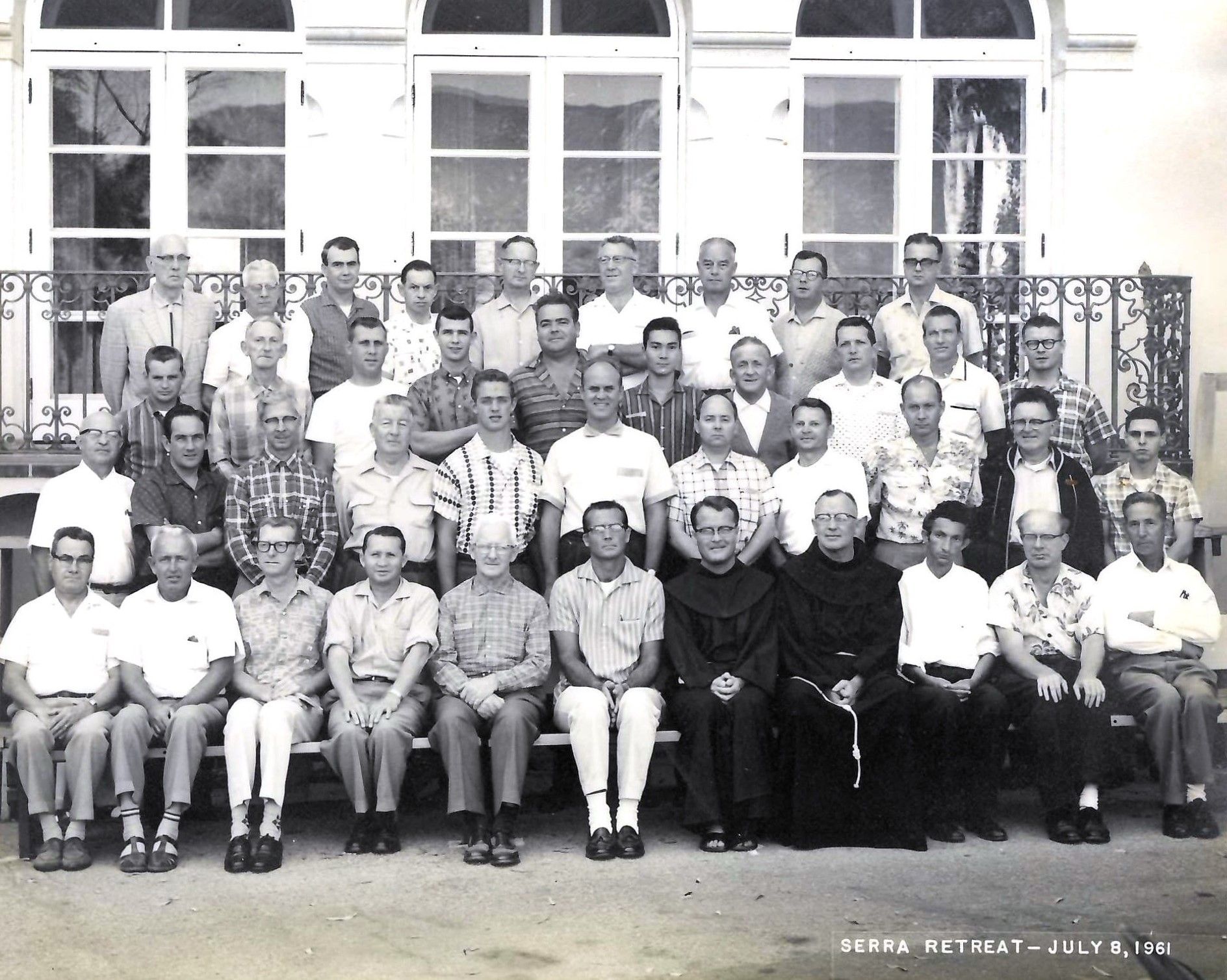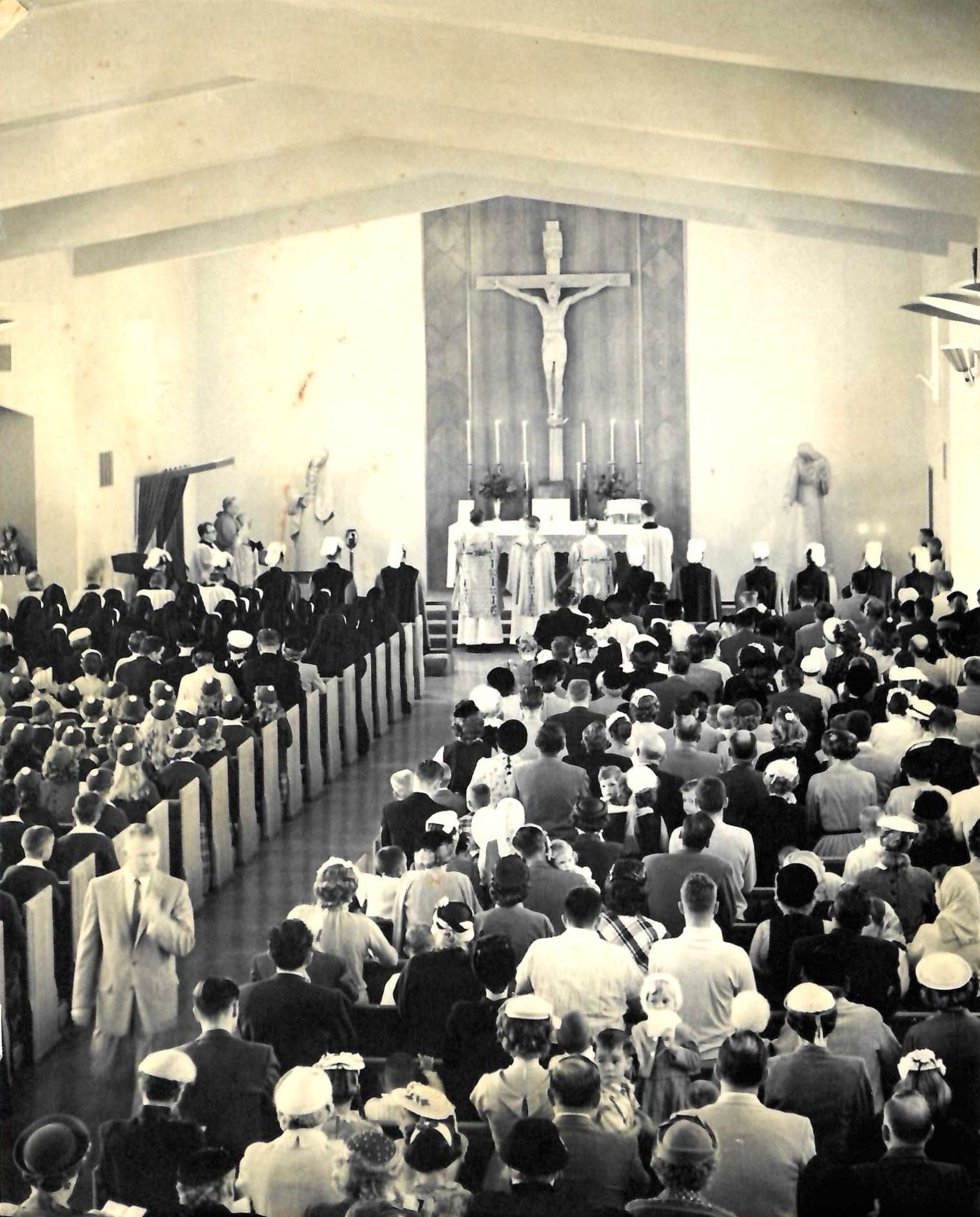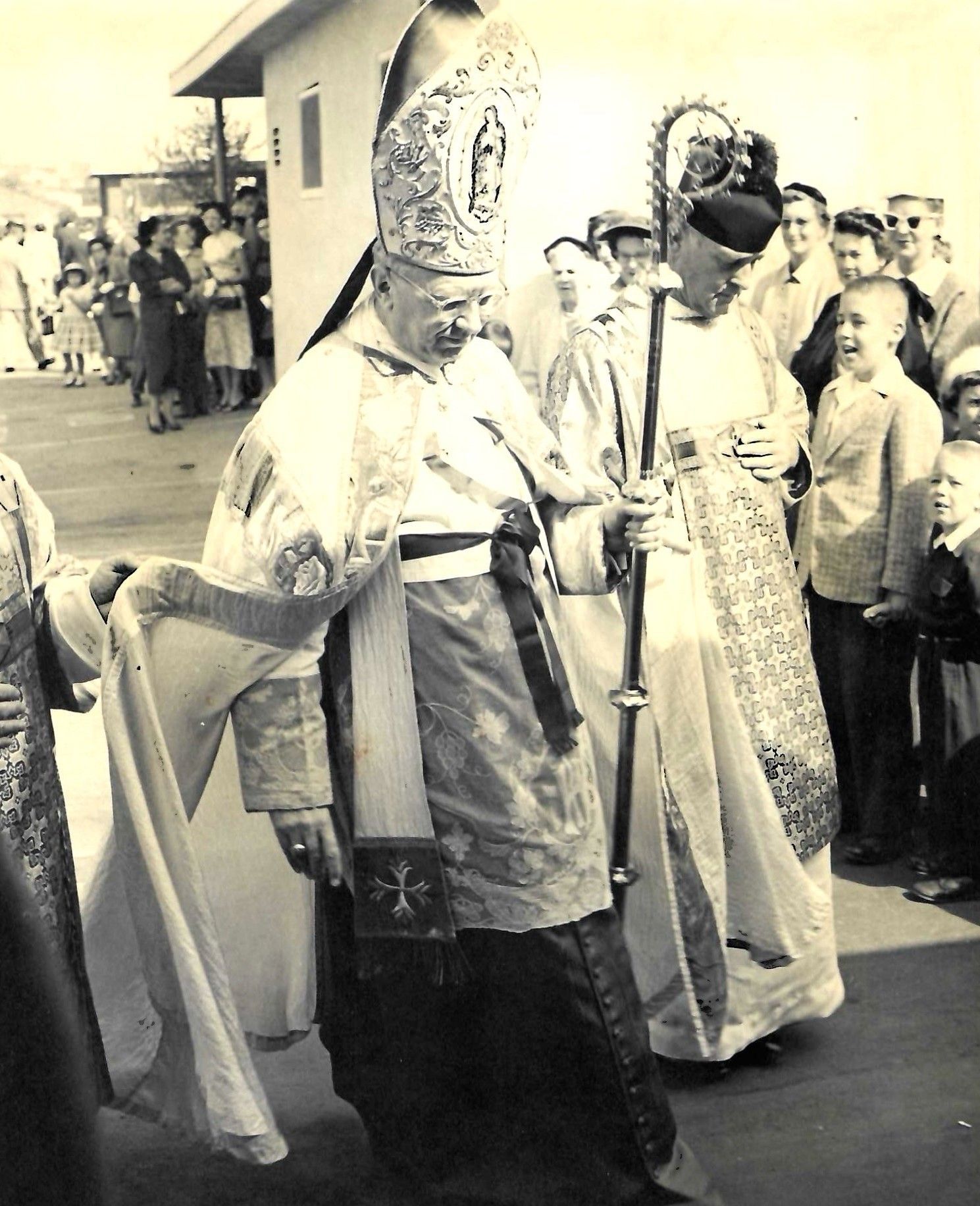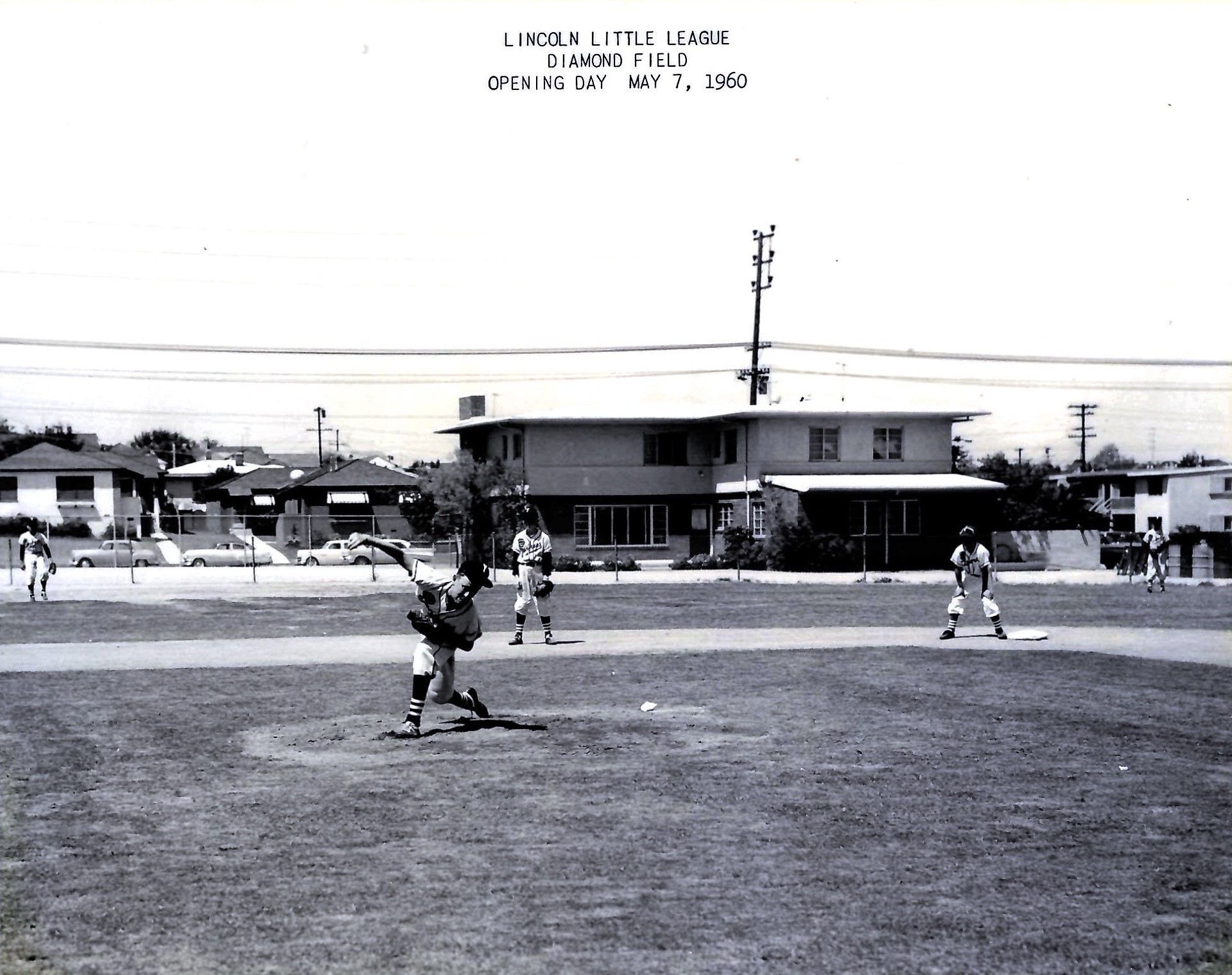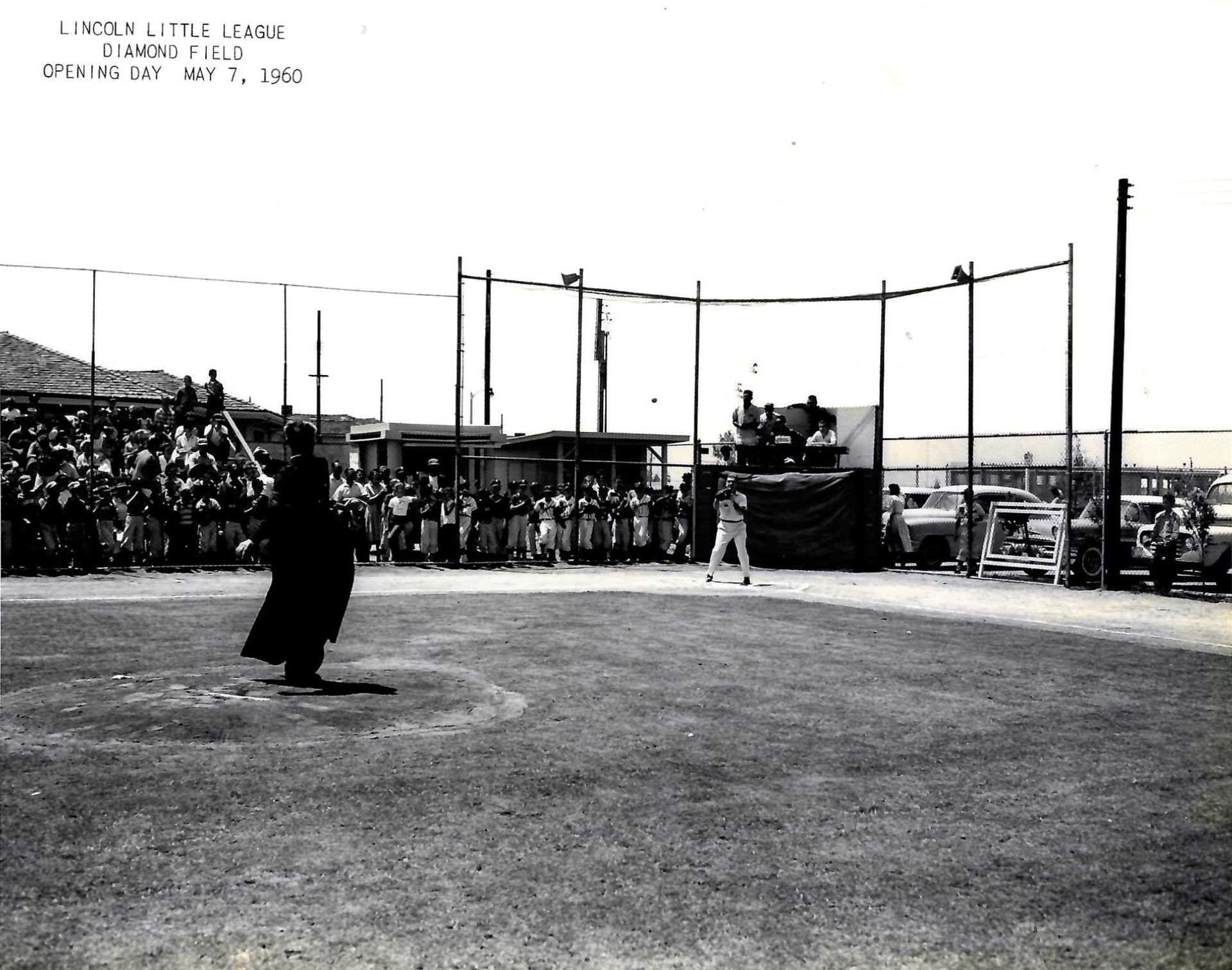The History of St. Anastasia Parish and School
IN THE BEGINNING ...
ln November 1952 the Assistant Pastor of St. Alphonsus Church in Los Angeles, Rev. James P. Diamond, was called to the office of the Archbishop of Los Angeles, Cardinal McIntyre, and notified that he was to form a new parish in the Westchester area of Los Angeles and that he was to be its first Pastor. The new parish was to include the area bounded by Georgetown Avenue on the east, the Los Angeles city limits alongside Hughes Aircraft Company on the north, the Pacific Ocean on the west, and Killgore Street on the south. This new parish was to be created from part of Visitation Parish, which itself had been created less than a decade before in 1943 during the rapid growth of Los Angeles in World War II.
Construction of the new church began in early 1953 on property originally acquired by the Diocese for a new Catholic High School in the West L.A. area. Part of the property was reassigned for the new parish, and the rest traded for some nearby property where St. Bernard's High School would be built.
Temporary housing for the new congregation was found at the home of Charles Hunner on Rindge Ave. Fifty people were expected for the first Mass on February 1, 1953, but more than one hundred and fifty people turned out. After 6 weeks in the Hunner home, another temporary facility was found. The next "church" turned out to be an abandoned water reservoir that was once part of the old Playa Del Rey water system before the Los Angeles water system was developed in this area. This Spanish style building was 25 by 50 feet in size and was partly above ground and partly below. It was constructed of reinforced concrete, as the men of the parish soon discovered when they jackhammered an opening for a doorway, which had walls sixteen inches thick.
The well-known tradition of loyal and dedicated service by parishioners began at the very beginning.
More than a hundred and fifty parishioners took turns on weekends wire-brushing, scouring, painting and making a simple altar and benches to seat 190 people. As the TIDINGS once noted, St. Anastasia soon became "unquestionable the best-looking reservoir in the U.S."
With the completion of the new church building on Manchester Avenue, the parishioners were back at work! The altar, the tabernacle, the large crucifix above the altar, the lectern and other items were made by the people of St. Anastasia. Originally designed for eventual conversion to an auditorium, the new church building seated 700. It saw its first Mass on Thanksgiving Day, November 26, 1953.
The parish continued to grow and in 1955 construction of an eight-room school building begun, Parishioners were back at work again building benches, painting, setting up playground equipment, constructing brick walls, installing sprinkler systems and assembling school desks. The outdoor shrine to our Blessed Mother was completed shortly after. St. Anastasia school opened September 19, 1955. The church, school and rectory were dedicated in 1956. In 1957 the school building was enlarged and in 1960 the convent was added. In 1964 St. Anastasia school reached its peak enrollment of 771 students with two classes per grade with students in 1st-8th grade.
The Los Angeles International Airport began an expansion initiative which caused a corresponding reduction in the size of St. Anastasia’s parish as well as its school. As the classroom size shrunk however, new developments grew. St. Anastasia now had space to create a science room, staff lounge, audio-visual room, and a parish community room.
The 1980’s brought many new transitions beginning in 1981 when the Sisters of the Holy Names of Jesus and Mary withdrew from the school opening it to a lay administrator for the first time before a Sister of St. Joseph of Carondelet assumed administrative duties in 1982. Donations from outside foundations also helped St. Anastasia grow and expand with a new library (1983) and Kindergarten (1984), a computer lab (1986) and science lab (1987) all thanks to the Fritz B. Burns Foundation.
In 2008, the parish began a Master Plan initiative to once again plan for future growth and expansion, with plans for a gymnasium and updated parish offices, however the financial recession caused that planning process to cease. Although the Master Plan was not completed, there have been several capital improvement projects around the property including:
- 2013 – St. Anastasia opened a Junior Kindergarten classroom
- 2014 – Pastors Plaza was completed
- 2016 – Grass field expanded, and fence replaced
- 2017 – School library was refurnished
- 2019 – Design for church remodel begins
- 2020 – Science lab was update to a state of the art STEAM lab
- 2022 – Church remodel begins, Safety updates to school, Dedication of Msgr. Vadakin Fine Art Room
- 2023 – New initiative for the development of an updated Master Plan began
- 2024 – Middle school classroom furniture was updated and new lockers were introduced
- 2025 - Electrical Updates to the school completed, and HVAC installed throughout the school building
Later in 2023 a new Master Plan team was formed. After reviewing the desires of the parishioners from the 2008 master plan initiative, we discovers that many ideas are still relevant for our needs today including: a new preschool, improved safety, traffic and parking, HVAC, a Parish Life Center. With a new director of development leading the charge our parish is now working to make strides and dreams become a reality. The new preschool plans are now underway, scheduled to open the doors to the new students in the Fall of 2027.
History of St. Anastasia Pastors
- The Founding Pastor, Father James P. Diamond (1953- 1977)
- Father Michael O’Shea (1977-1990)
- Msgr. Royale Vadakin (1990-2004)
- Fr. Tom King (2004-2010)
- Msgr. Gabriel Gonzalez (2010-2015)
- Fr. Leszek Semik (2016-present day)
